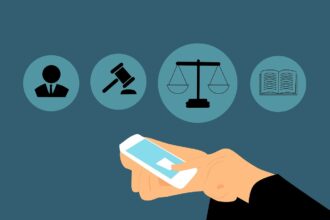As individuals become more connected online and with the devices they use in their homes and even wear on their bodies, they become more susceptible to crimes such as identity theft and data hacks. The ID Analytics 2016 Online Privacy vs. Security study found a direct correlation between a consumer’s amount of online exposure to their risk of identity theft, with those who have a high degree of exposure being four times more likely to be victims.
Being connected online isn’t just relegated to desktop computers and laptops. Now, every smart refrigerator, fitness bracelet, and home entertainment system may contain hidden threats lurking with each new piece of personal information added to the device.
Despite more prevalent threats to data security, consumers crave technology to help them in all aspects of their lives. A 2017 study by Assurant called The Connected Future: Navigating Promise and Risk found 65 percent of respondents are either very concerned or terrified of identity theft, but even more people, 68 percent, say technology makes their lives better. Here are some things you can do to protect your identity and your data as you use connected devices.
Get to Know What You’re Using
It may be time-consuming, but reading the manuals and terms of conditions of each device you are using will help you to know how your data is being used and what security measures are in place to protect it. Beth Hurter, solutions director for healthcare software and mobile application development company PointClear Solutions, says it is vital to be mindful of only using devices that use data encryption and employ security best practices during every use. Data encryption makes your personal details more difficult for hackers to access and decipher.
As you’re shopping for Internet of Things (IoT) devices, look for reputable brands that use the most recent, cutting-edge security protocol to protect customer data. Investigate any recent breaches the company has experienced and what threat-detection the brand has in place, and examine the secure network protocol a company uses before committing your finances — and identity —to the brand.
Commit to Password Protection
Often, when you first purchase a connected device, the product will come with a default password provided by the brand for you to use. You should immediately change this password to something complex before inputting any personal data. Then, you should change your password often.
Unique and intricate passwords can be hard to remember, but it is important to use different ones for every device you use. Once a hacker has successfully obtained one password, they’ll be able to login to as many devices as you have with that same password if they gain access to them. Using an Internet hub in your home that requires you to input an additional password adds an extra layer of password security to your connected devices.
Say Yes to Updates
Software updates can be annoying nuisances that force your usage of a device to halt until the update is completed. Even if an update takes less than a minute, often we are tempted to keep clicking “remind me later” instead of taking the time to go through the update.
In regards to your security, though, software updates are essential to help keep you protected. Software updates may include bug fixes that patch up vulnerabilities, or they may feature even better data protection you may be missing out on if you keep ignoring them.
 Implement Constant Monitoring
Implement Constant Monitoring
If your data security is compromised, the quicker you can identify an attack, the faster you can control the damage. Using an identity theft monitoring service can help alert you to when a breach occurs. Self-monitoring by checking bank account statements or running regular background checks on your identity can also clue you into misuse. Regularly take inventory of the applications you have on your connected device, and delete old ones you aren’t using anymore. Turn off devices when you’re not using them, so they are less exposed to hackers.
Beyond your home sanctuary, using IoT devices within an office can leave your work-related data, as well as any personal data you’ve shared at work, vulnerable. Data breaches are costly for both businesses and customers, as the IBM/Ponemon Institute 2016 Cost of Data Breach Study: Global Study found the average cost of a breach is a whopping $4 million. Businesses should consider the necessity of IoT devices used within an office, as well as the importance of investing in brands with the highest level of protection to keep all parties safe. IBM’s Security Intelligence magazine points out companies considering using IoT devices should implement protection using a firewall and intrusion prevention, plus two-factor authentication.
When considering any connected device, think about how valuable your data is when you’re determining what to invest. A brand that uses a third party to independently audit their software security can increase protection, while device tampering alerts help consumers stay vigilant.









